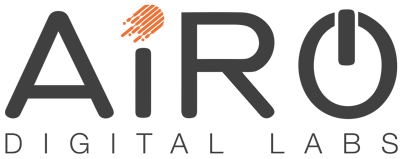Big Data and Analytics: A Healthcare CIO’s Golden Key to Reinvent Transformation
Big data and analytics are transforming numerous industries, including the healthcare sector. Healthcare companies rely on analytics to improve operations, finances, and clinical outcomes. According to statistics, the market for health-related analytics will reach about $28 billion by 2025. Linking healthcare and big data analytics can generate deeper insights from new patient data sources and healthcare providers in enhancing patient care and streamlining operations.
Benefits of Big Data for Healthcare Providers
Breaking down data silos to combine medical data from various sources and get a comprehensive view of your business from one source rather than various disparate sources is a major challenge of big data analytics in healthcare.
All of your data sources should be connected, and a true data-driven healthcare analytics solution should be able to analyze both structured and unstructured data in real-time. Your insights are not as useful as they could be without the ability to incorporate all your patient data, including diagnostic data, physician observations, and real-time data from medical equipment.
But there are many advantages to combining healthcare and big data analytics once you collect your data sources.
Improved Results:
Big data analytics can increase patient safety and care quality by giving access to real-time patient information while lowering the likelihood of human error and incorrect diagnosis.
Boost operational effectiveness:
By combining data from various sources, you can gain better insight into resources, inventory levels, and procurement, which helps you reduce waste, increase efficiency, lower risks, and streamline operations.
Streamline accounting and finance
Big data analytics in healthcare produce insights that can be used to quickly spot and address financial inaccuracies, enabling you to align your KPIs with your financial objectives.
Healthcare and Big Data Analytics - Use Cases
1. Spotting potential fraud
With an estimated $68 billion in yearly healthcare spending in the United States, healthcare fraud (HCF) is a multibillion-dollar drain on healthcare spending. HCF may result from dishonest professionals, sophisticated criminal plots, or sincere providers who unintentionally create errors in billing procedures. Analytics can identify and anticipate fraud through the:
Examining the claims trends of several insurance policies or insurers
The upcoding detection (e.g., services that are unnecessary in light of the diagnosis)
Finding phantom and duplication billing
Phantom billing is revealed by matching patient claims with the prior medical history.
2. Review electronic medical records (EHRs)
One of the most prevalent applications of big data analytics in healthcare is the usage of electronic health records. EHRs keep track of and record your patient's medical information, such as existing conditions and allergies, which helps to cut down on the number of pointless tests and their associated expenses. As patients are being treated, sharing patient data among healthcare professionals can eliminate unnecessary testing and enhance patient care. However, big data and analytics for EHR data can improve the quality of care while lowering costs. Medical data is typically segregated for security concerns.
3. Estimating patient volumes
Analytics technologies are being used to forecast the number of patients visiting each department at particular times, much like they are used to forecast the number of people utilizing transportation at a particular time of day. This strategy aids healthcare facilities in the following ways:
Allocating and managing resources (physicians and supporting staff)
Lowering irrational labor costs
A suitable workforce should be assigned as per the workload
4. Reduce Re-admissions
High patient readmission rates within a month of discharge result in higher hospital expenses. Healthcare providers can use big data to identify at-risk patients based on patient trends, medical histories, diagnostic data, and real-time information from medical equipment. So that patients can concentrate on their care rather than their medical bills, hospitals can offer these patients a lower readmission rate.
5. Real-Time Remote Patient Monitoring
To improve patient care, doctors must have access to real-time patient data, such as information on ER visits, length of hospital stays, new diagnoses, treatment outcomes, etc. These real-time insights are obtained from data gathered by IoT sensors and other technologies, which can improve the hospital's clinical, commercial, and administrative workflows. Real-time data can be analyzed to enable proactive patient care, ensure data-driven decision-making, improve treatment quality, and cut costs using big data and advanced analytics.
How AiRo Can Help?
With the use of data, analytics, and AI, there are now more opportunities than ever for organizations to expand quickly and set themselves apart from the competition. The healthcare ecosystem now has access to varied and large amounts of medical data (payers, providers, pharmaceuticals, and life sciences). AiRo offers Data Analytics and Governance services that facilitate the mining of healthcare data to produce insights, enhance care delivery, and support decision-making. In addition to this, AiRo’s proprietary telehealth suite, ViKi, helps in real-time remote patient monitoring and post-acute care support.

